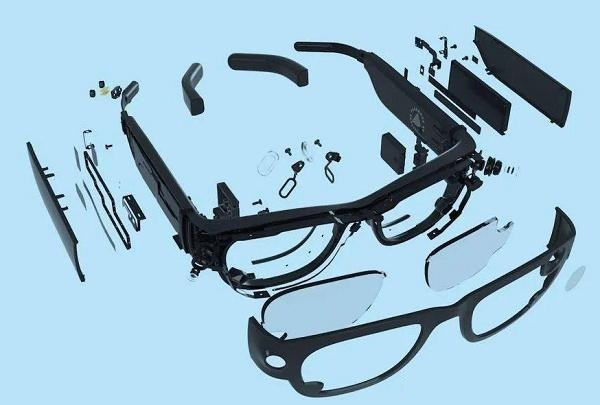Categorization:Harness Component
In the design of AR (Augmented Reality) glasses, the image module is one of the core components that affect the display quality and user experience. It not only determines whether the image is clear and realistic but also directly influences the comfort of wearing and the performance of the device. In the process of connecting the image module with the main control board, micro coaxial cable has almost become the standard configuration in the industry. So, why does this cable stand out in AR devices?
The inevitable demand for high-speed signal transmission
The image system of AR glasses requires real-time transmission of high-resolution image data, with extremely high requirements for bandwidth and signal integrity. Traditional ribbon cables are prone to crosstalk and signal loss under high-speed transmission, affecting the picture quality. In contrast, ultra-fine coaxial cables use precise coaxial structures, providing excellent shielding effects and impedance control capabilities, which can maintain signal stability and integrity in high-speed transmission environments, thereby meeting the high-bandwidth requirements of AR display modules.
Small and lightweight ideal solution
AR glasses have extremely high requirements for space utilization and overall weight. The diameter of micro coaxial cable is generally between 0.3mm and 0.5mm, which is thinner and lighter than traditional FPC or FFC ribbon cables. This extreme miniaturization design allows engineers to achieve complex wiring layouts in limited spaces, while effectively reducing the overall weight of the device, enhancing comfort and aesthetic appeal.
Balancing flexibility and durability
In daily use, AR glasses often need to adjust the wearing angle or undergo slight displacements, which poses strict requirements for the flexibility and bendability of the cables. The extremely fine coaxial cable束 boasts excellent flexibility and fatigue resistance, maintaining stable signal transmission even in narrow channels or under repeated bending conditions, significantly enhancing the product's reliability and lifespan.
Four, the natural advantage of electromagnetic compatibility
AR devices have a high integration level, and electromagnetic interference (EMI) issues are particularly prominent. Micro coaxial cable forms a natural electromagnetic shielding layer through the coaxial structure, effectively suppressing the radiation and coupling of interference signals, thus maintaining the clarity and stability of the image transmission process and ensuring high-quality display effects. It is precisely because it has the characteristics of high speed, lightweight, flexibility, and anti-interference that micro coaxial cable has become the ideal solution for connecting AR glasses image modules and is gradually becoming the mainstream industry standard.
The high-performance of micro coaxial cable has greatly enhanced the quality, lightweight design, and stability of AR glasses. In the future, as AR technology continues to advance, the design of such cables will become more refined to meet the application needs of higher resolutions and more complex structures.
I amSuzhou Hui Cheng Yuan Electronic, long-term focused on the design and customization of high-speed cable harnesses and ultra-thin coaxial cables, committed to providing stable and reliable high-speed interconnect solutions. If you have related needs or want to learn more, please contact:Manager Zhang 18913228573 (WeChat same number)。